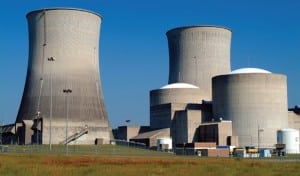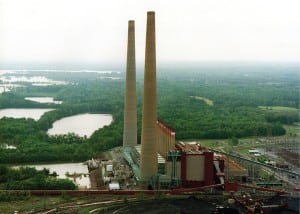Gas
-
Gas
EIA: Natural Gas Generators in New England See Supply Constraints, Highest Prices
Average spot natural gas prices in New England have surged to $3 per million British thermal units (MMBtu) higher than natural gas prices at the Henry Hub since November, driven up by supply constraints from natural gas pipelines that haven’t kept up with demand, high international prices, and declining production in eastern Canada, the U.S. Energy Information Administration (EIA) says in a report released last week.
-
Coal
Wisconsin Utility Doubled Its Gas Burn in 2012
Wisconsin Energy nearly doubled its natural gas burn for power generation in 2012, from 23.9 billion cubic feet (bcf) in 2011 to 46.5 bcf in 2012. Gale Klappa, CEO, said during a January 30 earnings conference call that natural gas units at the company’s 1,150-MW Port Washington generating station operated at a 46% capacity factor in 2012. This compares with a 23% capacity factor in 2011.
-
Coal
Federal Court Declines to Bind EPA to New Source MATS Deadline
A federal appeals court last week denied a motion from developers of new coal- and oil-fired power plants to force the Environmental Protection Agency (EPA) to finalize its reconsidered Mercury and Air Toxics Standards (MATS) for new sources by March and help them avoid a regulatory Catch-22 posed by a looming rule to curb greenhouse gas emissions in new plants.
-
Coal
EPA Rules, Economy, Natural Gas Prices Prompt Georgia Power to Retire 2 GW of Coal, Oil Power
Georgia Power on Monday said it was seeking state regulatory permission to decertify and retire 15 coal- and oil-fired generating units—a total capacity of 2,061 MW—citing several factors, including costs to comply with existing and future environmental regulations, economic conditions, and lower natural gas prices.
-
Coal
EPA Finalizes Standards for Industrial Boilers, Certain Incinerators
The Environmental Protection Agency (EPA) on Dec. 20 finalized changes to a specific set of adjustments to Clean Air Act that apply to a coal, oil, natural gas and biomass boilers and certain solid waste incinerators.
-
Coal
World Energy Outlook Foresees Distinct Generation Shift
Global generating capacity is poised to soar by more than 72%, to 9,340 GW, by 2035 from 5,429 GW in 2011, despite retirement of about 1,980 GW, the International Energy Agency (IEA) forecasts in its World Energy Outlook 2012, released in November.
-
O&M
Emerging Technologies Enable “No Regrets” Energy Strategy
Achieving a balance between affordable and sustainable electricity while improving reliability is a challenge unlike any the electricity sector has faced since its inception. Technology innovations in key areas such as energy efficiency, smart grid, renewable energy resources, hardened transmission systems, and long-term operation of the existing nuclear and fossil fleets are essential to shaping the future of electricity supplies.
-
Coal
Slow Growth Ahead—with Unexpected Flares of Activity
North American shale gas was supposed to realign the generation fleet here and abroad (thanks to anticipated exports) far into the future. Turns out, that’s not exactly how the near term is shaping up. Despite stagnant (and even putrid) economies and legislative bodies in the U.S. and EU, there promises to be sufficient market volatility to keep everyone alert.
-
Coal
Coal Battered Early, Later Rebounds
For the first time, U.S. generation from coal and natural gas was equal in 2012, although just momentarily. Gas dominated early in the year, but as gas prices rose in response to supply and demand forces, coal use rebounded. Expect more of the same give-and-take in 2013.
-
Gas
Natural Gas–Fired Plants Continue Rollercoaster Ride
The availability and low price of natural gas enticed many U.S. utilities to fuel switch on a grand scale in 2012. Increased demand has put upward pressure on prices, moving coal back to the top of the dispatch order in some regions. Expect the price momentum to shift often in 2013.




